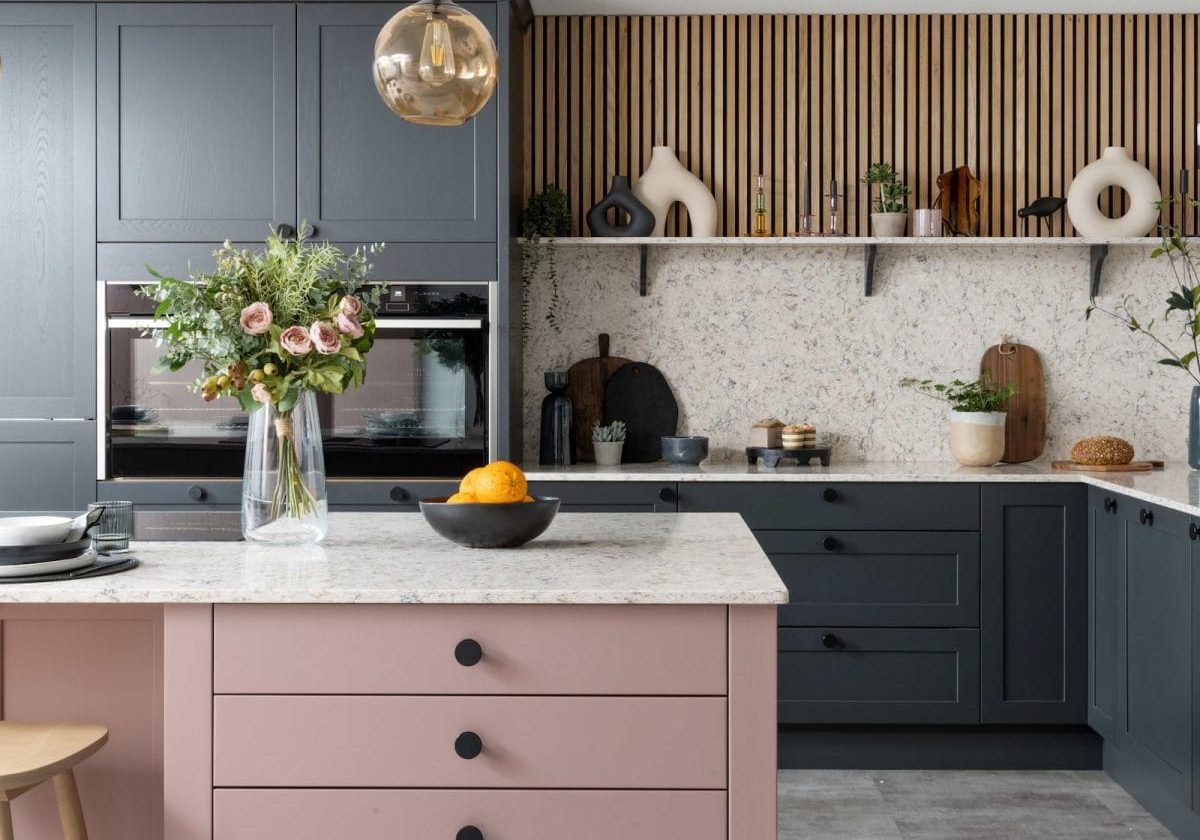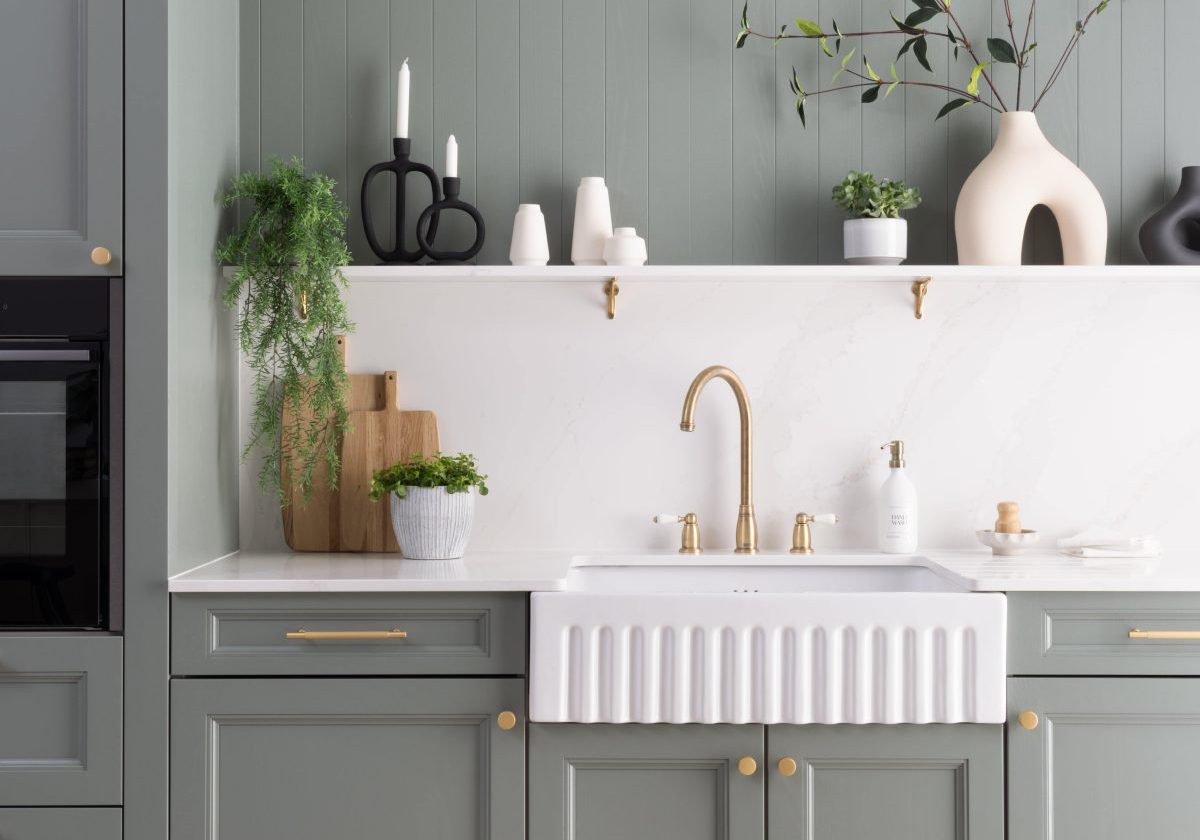Here at Classic Interiors, we’ve been designing and installing exceptional bespoke kitchens for over 35 years. One of the first things we focus on when planning your brilliant new interior is the layout. Getting your kitchen layout right is key to creating a fantastic, long-lasting design. The layout of your kitchen provides the foundation of your space. It determines your workflow, dictates your storage and worktop capacity and defines how you and your guests experience the room. Unlike the colour of your cabinets or the model of your appliances, it cannot easily be updated, making finding the best possible solution crucial to the long-term success of your project. This guide is intended to demystify some of the popular terms and techniques associated with kitchen layouts, giving you the confidence needed to begin your design.
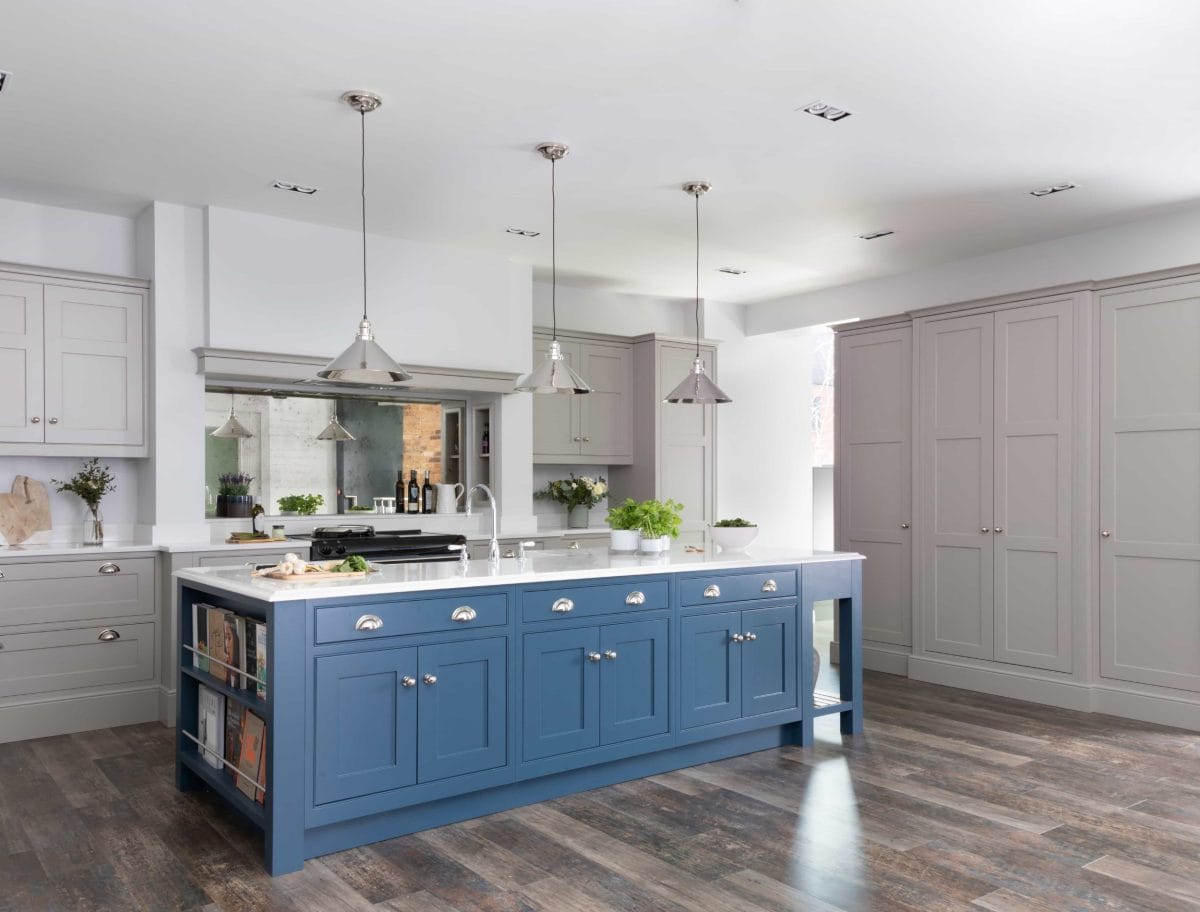
What is the kitchen work triangle?
You might have heard of something called the kitchen work triangle. The kitchen work triangle was devised in the 1940s to help property developers formulate functional kitchens more efficiently. It dictates that your sink, refrigerator and hob should be positioned four to nine feet apart, forming a triangle. Providing nothing interrupts this triangle, you should be left with a practical and effective workspace. While it stands to reason that ensuring your main kitchen appliances aren’t too far apart or blocked by obstacles like doors or tables will enhance your layout. Sticking too rigidly to these rules could compromise other aspects of your design, especially since kitchens have become more communal.
The new take on the kitchen work triangle – zoning
These days, kitchen designers tend to focus more on zoning the room by function or activity. While some zones, like the washing-up area or the food prep area, still relate to the work triangle, they refer to other features like your dishwasher, waste disposal and storage in more detail. Planning your space in this way allows greater freedom in terms of your lifestyle. For example, if you enjoy sharing your home with friends, you may benefit from a dedicated social zone, or if you often spend time cooking as a family, you may need additional food prep areas and more floor space. Your designer will work closely with you to understand how you intend to use your kitchen in order to find the best layout to suit your individual needs.
How to find the right kitchen layout for you
Whether you have a large or small kitchen, finding the best layout to complement your lifestyle and maximise your space can be tricky. You will need to think carefully about the needs of your household and how you are likely to use the space. While considering the work triangle and how to arrange different functional zones makes a great starting point, we would always recommend speaking to a professional kitchen designer. Calling upon their many years of experience, they will make sure your new layout offers the best possible solution in terms of your unique requirements.

6 Most Common Kitchen Layouts
These tried and tested layouts offer an excellent solution for various shapes and sizes of kitchen.
The Galley Kitchen
Galley kitchens are well suited to long, narrow spaces. When planned correctly, they can be very practical. However, it’s best to restrict tall overhead cabinetry to one side to avoid accentuating the limited width of your room. You can also create a galley-style layout by positioning a long island opposite a single kitchen wall.
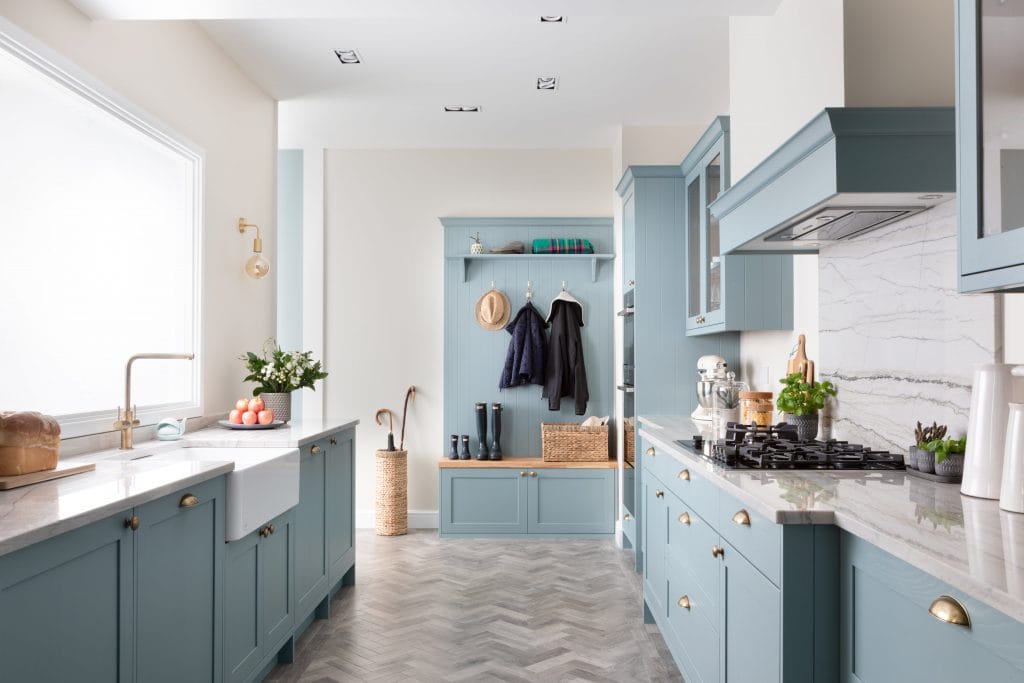
The One-Wall Kitchen
Ideal for open-plan living spaces and compact rooms, one-wall kitchens combine clean looks and optimum efficiency. You will need to flatten the kitchen triangle, spacing your fridge, sink and hob far enough apart to allow plenty of landing space when cooking and washing up.

The Island Kitchen
Island focused layouts are perfect for spacious kitchens and open-plan interiors. As well as offering room to position key appliances and prepare food, the island can help establish a boundary between cooking and social spaces, preventing unwanted interruptions.

The Peninsula Kitchen
Bringing a row of units along one wall and out into the room to create an L or U-shaped layout, peninsulas offer similar benefits to a kitchen island. However, they tend to suit rooms too narrow or small for a central island. Peninsulas offer a great opportunity to add informal bar stool seating.
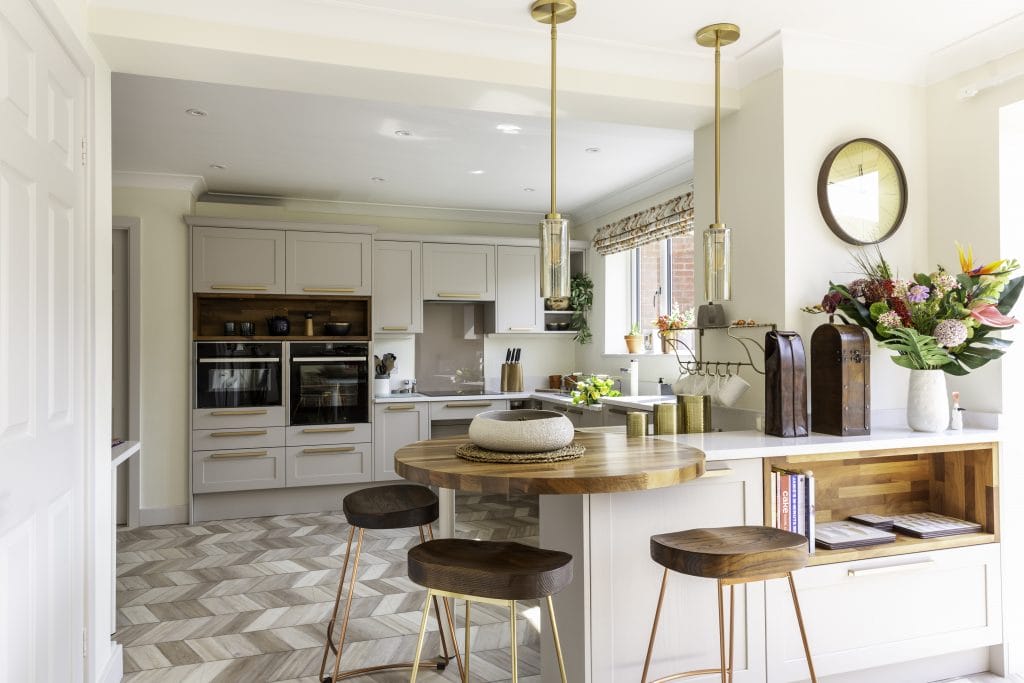
The U-Shaped Kitchen
Offering ample worksurfaces and excellent workflow, U-shaped kitchens are great for family and independent cooking sessions alike. However, you’ll need to consider some clever corner storage solutions. A peninsula can be used to achieve a U-shaped layout in an open-plan space. If opting for a U-shaped layout in an enclosed room, it’s best to avoid introducing more than one wall of overhead units, as this can make your kitchen feel claustrophobic.
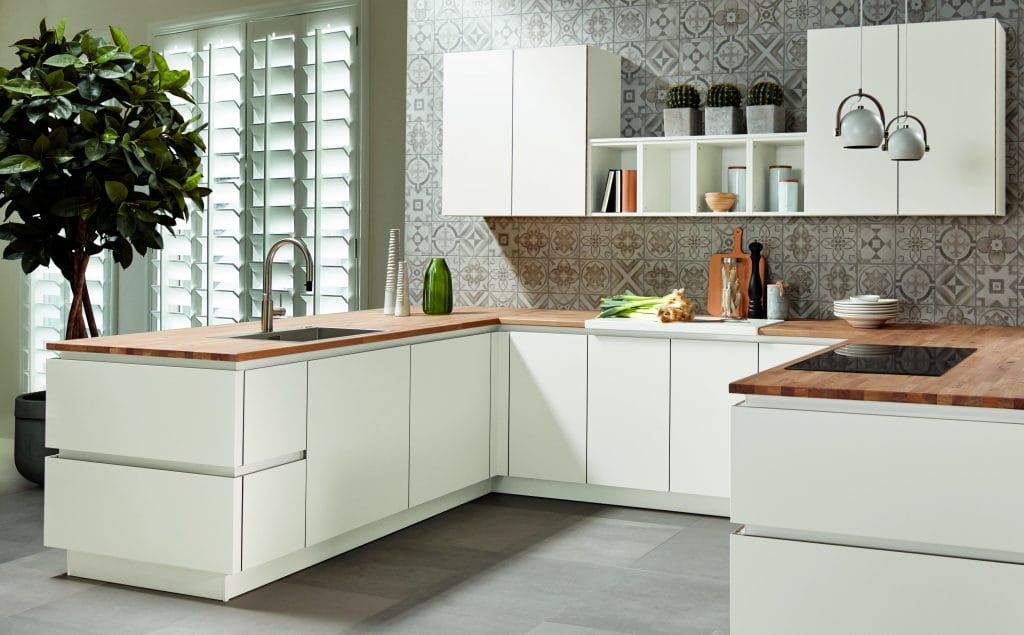
The L-Shaped Kitchen
Perhaps the most versatile and popular layout of all, L-shaped designs complement small and large kitchens alike. They can easily be paired with a kitchen island. You might also want to consider dedicating the shorter leg of the L-shape to a sleek bank of tall units.

Kitchens come in all shapes and sizes, and, what with your individual requirements as well, you’ll find that no two kitchen layouts are ever quite the same. While there’s plenty to think about in terms of positioning your cabinets and arranging appliances, you can take a weight off your mind by consulting your trusted local experts. If you’d like to speak to our friendly and professional team about finding your perfect kitchen layout, please give us a call on 01527 66740 or email us at hello@classicinteriors.co.uk


